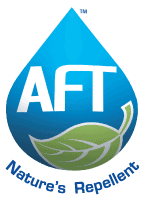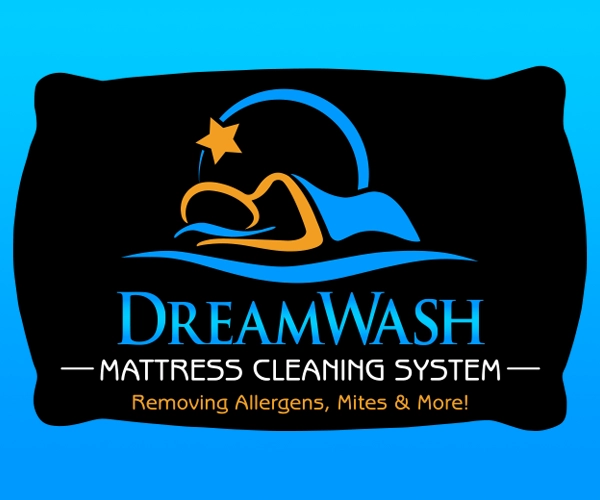nanoMAXX Green Encap Cleaner
Your Health & Safe Cleaning

Personal Health
Body burden testing, or the amount of toxins running through our bloodstream, is a hot topic today among environmentalists and public health experts who warn that the industrial chemicals we come into contact with every day are accumulating in our bodies and endangering our health in ways we have yet to understand. “We are the humans in a dangerous and unnatural experiment in the United States, and I think it’s unconscionable,” said Dr. Leo Trasande, Assistant Director of the Center for Children’s Health and the Environment at the Mount Sinai Medical Center in New York City. He goes on to state that industrial toxins could be leading to more childhood disease and disorders. “We are in an epidemic of environmentally mediated disease among American children today,” he said. “Rates of asthma, childhood cancers, birth defects and developmental disorders have exponentially increased, and it can’t be explained by changes in the human genome. So what has changed? All the chemicals we’re being exposed to.”
EPA records show that of the 1,500 new chemicals submitted each year, the agency asks for additional testing roughly 10 percent of the time. The EPA has set up a voluntary testing program with the major chemical manufacturers to retroactively test some of the 3,000 most widely used chemicals. Yet this is but a small fraction of the number of new chemicals that have appeared over the past 50 years, only a minute fraction of which have been tested for their effect upon the human condition. In an attempt to offer some protection against these potentially lethal toxins,
Bacteria, organophosphates, viruses, solvents, radiation, trans fatty acids in processed foods – they are all very similar, when seen in the light of the fundamental concept first expounded by Hippocrates 2,500 years ago, that an exterior agent, hostile to an organism’s ability to function, may cause disease or systemic malfunction. Today approximately 80,000 synthetic chemicals exist which had not yet been invented in 1950, when DDT was the most widely used toxic chemical. Since 1960, in the U.S. alone, the production of synthetic chemicals, which eventually find their way into the soil, air and water has risen from 10 billion pounds per year to the current estimate of 35 billion pounds. Of these, only about 600 are known to be carcinogenic, neurotoxic and/or teratogenic, because the rest have never been tested for safety!
MCS – Multiple Chemical Sensitivity
Results of this study provide evidence that MCS is widespread and increasing in the US population: an estimated 25.6 million adults are diagnosed with MCS, and an estimated 51.8 million adults report chemical sensitivity. Using the same criteria to assess MCS and chemical sensitivity as prior US national prevalence studies, this represents an increase of 300% in diagnosed MCS and 200% in self-reported chemical sensitivity in a little more than 10 years.
Among individuals diagnosed with MCS, 71.0% report being diagnosed also with asthma or an asthma-like condition. Thus, individuals with MCS are proportionally more likely to be asthmatic than individuals without MCS (prevalence odds ratio 9.6; 95% confidence interval 6.5 to 14.2).
In addition, among individuals with MCS, 86.2% report adverse health effects from exposure to fragranced consumer products. Thus, individuals with MCS are proportionally more likely to be fragrance sensitive than individuals without MCS (prevalence odds ratio 16.8; 95% confidence interval 10.3 to 27.5).
As a consequence, individuals with MCS can be prevented from accessing restrooms, businesses, workplaces, and public places due to risk of adverse health effects—some potentially disabling—from fragranced consumer products. From https://www.ncbi.nlm.nih.gov/pmc/articles/PMC5865484/
With respect to children in schools, who develop a chemical sensitivity to the glue in the carpeting, the cleaning agents in the bathrooms, the paint on the walls, and especially mold, which is omnipresent, the child is more often looked upon as a disciplinary problem than as a victim of MCS.
nanoMAXX is as powerful a cleaner and degreaser as any chemical product now on the market. It not only does a superior job, but is also entirely non-toxic, non-hazardous and safe for the environment. In addition, it is extremely economical to use. nanoMAXX is not your everyday normal cleaning product. nanoMAXX is very green and a very powerful ally in the battle for green cleaning that is actually effective at removing soils while being a safe, sustainable and cost-effective choice for a wide variety of cleaning options on both hard and soft surfaces.

Personal Health
Body burden testing, or the amount of toxins running through our bloodstream, is a hot topic today among environmentalists and public health experts who warn that the industrial chemicals we come into contact with every day are accumulating in our bodies and endangering our health in ways we have yet to understand. “We are the humans in a dangerous and unnatural experiment in the United States, and I think it’s unconscionable,” said Dr. Leo Trasande, Assistant Director of the Center for Children’s Health and the Environment at the Mount Sinai Medical Center in New York City. He goes on to state that industrial toxins could be leading to more childhood disease and disorders. “We are in an epidemic of environmentally mediated disease among American children today,” he said. “Rates of asthma, childhood cancers, birth defects and developmental disorders have exponentially increased, and it can’t be explained by changes in the human genome. So what has changed? All the chemicals we’re being exposed to.”
EPA records show that of the 1,500 new chemicals submitted each year, the agency asks for additional testing roughly 10 percent of the time. The EPA has set up a voluntary testing program with the major chemical manufacturers to retroactively test some of the 3,000 most widely used chemicals. Yet this is but a small fraction of the number of new chemicals that have appeared over the past 50 years, only a minute fraction of which have been tested for their effect upon the human condition. In an attempt to offer some protection against these potentially lethal toxins,
Bacteria, organophosphates, viruses, solvents, radiation, trans fatty acids in processed foods – they are all very similar, when seen in the light of the fundamental concept first expounded by Hippocrates 2,500 years ago, that an exterior agent, hostile to an organism’s ability to function, may cause disease or systemic malfunction. Today approximately 80,000 synthetic chemicals exist which had not yet been invented in 1950, when DDT was the most widely used toxic chemical. Since 1960, in the U.S. alone, the production of synthetic chemicals, which eventually find their way into the soil, air and water has risen from 10 billion pounds per year to the current estimate of 35 billion pounds. Of these, only about 600 are known to be carcinogenic, neurotoxic and/or teratogenic, because the rest have never been tested for safety!
MCS – Multiple Chemical Sensitivity
Results of this study provide evidence that MCS is widespread and increasing in the US population: an estimated 25.6 million adults are diagnosed with MCS, and an estimated 51.8 million adults report chemical sensitivity. Using the same criteria to assess MCS and chemical sensitivity as prior US national prevalence studies, this represents an increase of 300% in diagnosed MCS and 200% in self-reported chemical sensitivity in a little more than 10 years.
Among individuals diagnosed with MCS, 71.0% report being diagnosed also with asthma or an asthma-like condition. Thus, individuals with MCS are proportionally more likely to be asthmatic than individuals without MCS (prevalence odds ratio 9.6; 95% confidence interval 6.5 to 14.2).
In addition, among individuals with MCS, 86.2% report adverse health effects from exposure to fragranced consumer products. Thus, individuals with MCS are proportionally more likely to be fragrance sensitive than individuals without MCS (prevalence odds ratio 16.8; 95% confidence interval 10.3 to 27.5).
As a consequence, individuals with MCS can be prevented from accessing restrooms, businesses, workplaces, and public places due to risk of adverse health effects—some potentially disabling—from fragranced consumer products. From https://www.ncbi.nlm.nih.gov/pmc/articles/PMC5865484/
With respect to children in schools, who develop a chemical sensitivity to the glue in the carpeting, the cleaning agents in the bathrooms, the paint on the walls, and especially mold, which is omnipresent, the child is more often looked upon as a disciplinary problem than as a victim of MCS.
nanoMAXX is as powerful a cleaner and degreaser as any chemical product now on the market. It not only does a superior job, but is also entirely non-toxic, non-hazardous and safe for the environment. In addition, it is extremely economical to use. nanoMAXX is not your everyday normal cleaning product. nanoMAXX is very green and a very powerful ally in the battle for green cleaning that is actually effective at removing soils while being a safe, sustainable and cost-effective choice for a wide variety of cleaning options on both hard and soft surfaces.
Sign up to get the latest Bonnet Pro News & Exclusive Special Discounts
Sign Up to Get the latest Bonnet Pro News & Exclusive Special Discounts
Pick the Best Products & Shipping Deals
Touch HereGet the best product for your needs video
Product use chart
Get the most for your shipping dollars video
Click here.
Order Our Sample Packs
.Super SAMPLE PACK
These discounted sample packs help you explore Bonnet Pro products. Become the legend in your town.
Must Have Proprietary Bonnet Pro Technology
Must Have Proprietary
Bonnet Pro Technology





